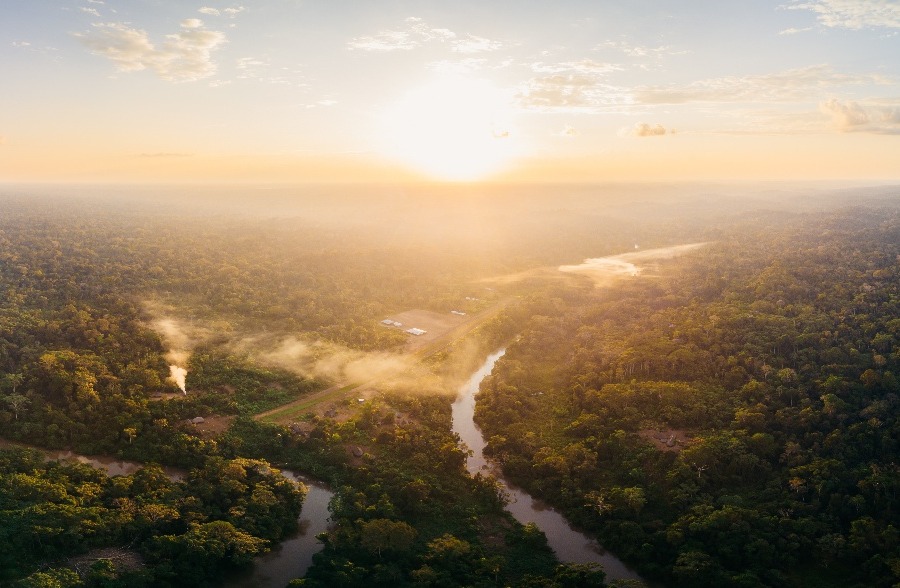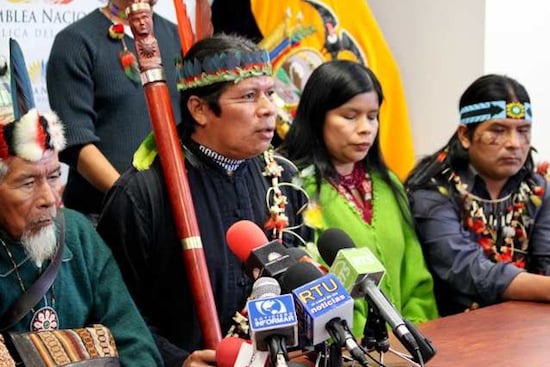Sumak Kawsay: Teachings of Indigenous Peoples
Sumak kawsay, or "good life" in the Kichwa language, is an Indigenous principle promoting living in harmony with nature in order to achieve wellbeing for all.

The Meaning of Sumak Kawsay
Sumak kawsay, which translates to “good life” or “life in harmony” in the Kichwa language, is a concept with origins in Indigenous cultures throughout the Andean region and the Amazon rainforest.
Though different peoples and cultures define sumak kawsay in slightly different ways, one common element is living in harmony with nature. Sumak kawsay promotes the idea that the collective wellbeing of the community is achieved through harmony within nature. For many Indigenous people, this way of life is integral to their cultures.
Sumak kawsay is sometimes thought of as an alternative to “Western” ideas of development that emphasize profit, commodification, and infinite growth.
Sumak kawsay instead emphasizes respect and care for nature, and how this relationship is the basis of a “good life.” This stems from an Indigenous worldview that sees nature as alive and humans as a part of an interdependent community that includes all other life forms. This community of life is entirely dependent on what nature offers: fertile soil, healthy bodies of water, abundant flora and fauna, thriving forests. And it is these things—not material wealth or accumulation—that truly constitute sumak kawsay.
For some Indigenous groups, the specific cultural practices and traditional knowledge they have are also crucial components of sumak kawsay. Maintaining these traditions and knowledge systems are key to achieving sumak kawsay—not just for their own communities, but for all living and nonliving beings.
Sumak Kawsay and the Protection of Nature
In recent years, a number of Indigenous communities have shared the idea of sumak kawsay with the world, including their vision for achieving sumak kawsay for all.
These communities have invoked sumak kawsay and their rights to defend their land, cultures, and sovereignty as governments and corporations encroach on their territories without consent. Their efforts have highlighted the ways in which extractivism and industrial development threaten frontline Indigenous communities and the ecological balance of the entire planet.
One such community is the Sarayaku people of the Ecuadorian Amazon rainforest.

Community leaders from Sarayaku at Ecuador's National Congress building calling for justice as they prepare for the final hearing in their 2011 case against the Republic of Ecuador.
Part of Sarayaku’s vision for achieving sumak kawsay is granting rights to nature and protecting the Amazon rainforest. For them, recognizing nature as alive with an inherent right to exist and flourish is a crucial component of achieving sumak kawsay and a better future for all. As Angun Gualinga of Sarayaku explains, it is from this understanding of and relationship to nature that sumak kawsay must be built.
Sumak kawsay in Government
Influenced by the Sarayaku community and other Indigenous groups, nations such as Ecuador and Bolivia have incorporated sumak kawsay into their constitutions.
Ecuador incorporated the concept of sumak kawsay into its constitution in 2008. The newly written constitution had established that
- the people of Ecuador have a right to live in an ecologically balanced environment that guarantees sumak kawsay
- the importance of the Amazon rainforest for ecological balance on Earth calls for the protection of its ecosystems in alignment with the principles of sumak kawsay
- economic, political, sociocultural, and environmental systems are to be developed to support sumak kawsay
- the government is responsible for promoting the use of scientific research, technological research, and ancestral wisdom to achieve sumak kawsay
Stay Connected to Our Work
Get a digest of Pachamama Alliance news, events, and resources in your inbox every other month, plus breaking news about our work.
